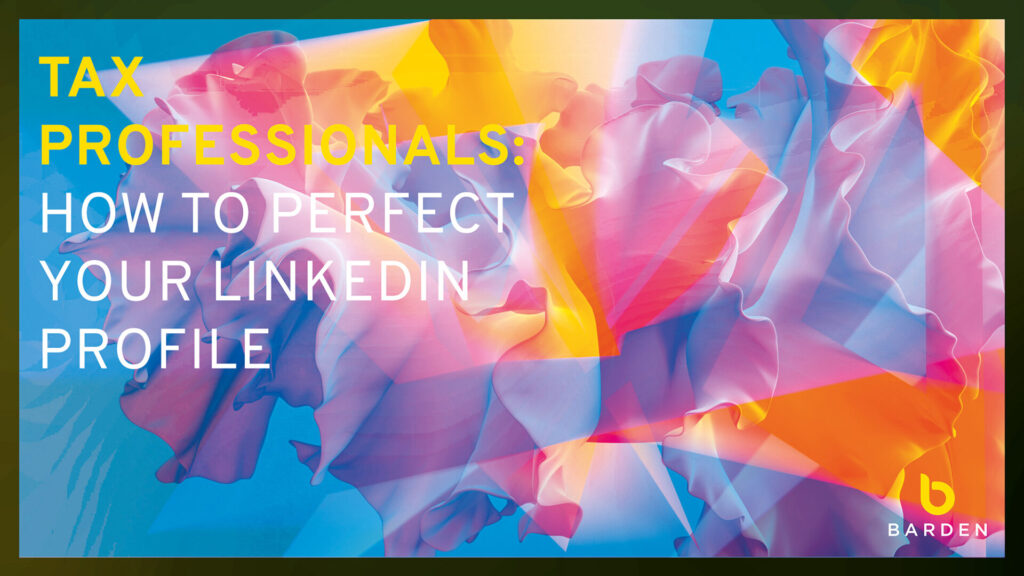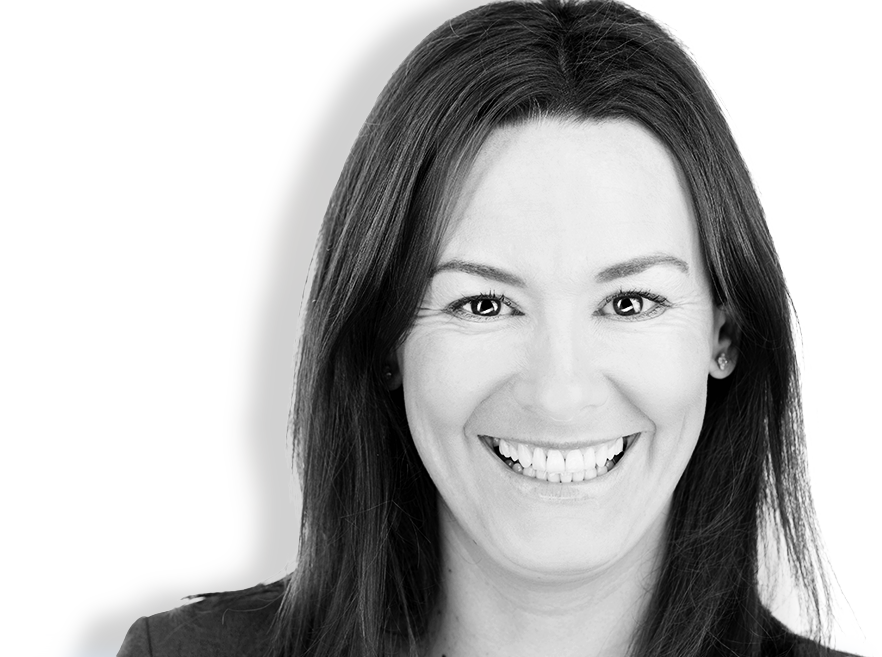There’s no getting away from it. If you haven’t already, it’s time to embrace, build and promote your online presence. We are all familiar with LinkedIn, and as the stats would suggest, we’re using it more and more. Not just for job searching, but for everything. From building bona fide networks to connecting with old colleagues and college friends, it’s a tool that most of us use on a daily basis.
But what’s essential in building a perfect LinkedIn profile? What makes the difference between a great, a good and a not-so-good profile? Here are a few tailored tips from Barden for tax professionals on how to create a LinkedIn profile that will get you noticed and possibly even discovered!
#1 Distinguish it from your CV
Firstly, you need to remember your CV and LinkedIn profile should not be the same. LinkedIn is a social networking site and is effectively an online personal branding tool. Your CV is a formal document and is the tool used in most cases of first entry into a recruitment process. It’s also important to remember that, unlike your CV, which can have many versions, you only have one LinkedIn profile.
This makes a difference as to how your LinkedIn profile should look compared to your CV and the pointers below illustrate this.
#2 Use relevant content in a relevant format
Although different to your CV, your LinkedIn profile must match your CV, representing your career history correctly and consistently, down to qualifications and months of employment. In other words – be honest. Imagine you’re at the final stage of an interview process and the HR Manager suddenly discovers a discrepancy between your CV and online profile – what does that say about you? What are you trying to hide? Make sure that your profile mirrors your CV.
However, in saying all of that, there is no requirement that you upload your entire CV onto your profile – your job title with a snapshot of your role is sufficient. In fact, I would be reluctant to include all of your experience and achievements as you want your CV to fill in those gaps.
Think visual. Blocks of text are boring. Your content might be super, but no one will read it if it looks too long. Break it up with subtitles, bullets or lines between paragraphs to keep the eyes moving and to highlight the really important parts of your text. Don’t forget to keep it brief – summarise your role mandate in no more than 4-5 lines, and keep achievements to 3-4 bullet points.
#3 Use appropriate style of writing and style of language, bearing in mind your target audience
Be personal – Think of your LinkedIn summary like the landing page of a website, you need to give people a reason to stay and read on. Articulating what makes you good at your job, and why you stand out above others is a good place to start.
Go smart-casual – We’re in the online world here, and a formal suit isn’t required. Yes, absolutely, grammar must be spot on, but you can certainly become more fluid in your approach to language. This isn’t a professional business case, letter or CV, and as such, you have a degree of creative input. But don’t go too crazy… think: novel, smart and staying professional rather than outlandish is probably the safest approach.
Also think of your target audience – writing a great LinkedIn profile is like writing a good sales pitch. It must play to what your audience is looking for. If are actively looking for a job, make sure your summary clearly states your area of tax expertise and your strengths in language common to the tax & finance sector, so a recruiter or HR person will be able to find you via searching, and also be able to quickly recognise your skill set.
Ensure you use keywords, job titles and skills that align with the type of role you want to be discovered for. Use the same language in your summary and job description sections as the market is using to describe your role and industry – Pharmaceutical, Manufacturing, Professional Services, CTA, international tax, transfer pricing, transfer pricing, VAT etc.… Maybe try using the same language as in the specs of jobs that interest you.
#4 Use an appropriate Photo
Yes, you need to have a photo, but be sure to remember that
1) LinkedIn is not Instagram and
2) Keep it simple – head shot, slight side profile, taken on a good hair day, not a selfie, not at a party, on your own, with plain background and do try to smile… or at least appear mildly amused!
#5 Review and ask for an opinion
Next review your finished profile to see others will find it and perceive it. Look out for the simple errors (maybe ask a mentor, colleague or career partner to review it at this point).
#6 Start connecting
Finally – you are only as good as your connections. LinkedIn works on the basis of degrees of separation. The more relevant people in the tax and finance community you are connected with the wider the network of people you are likely to have an indirect connection with. You won’t show up on my search if we are not connected or you are at least a connection of a connection. Also, remember to keep your profile public.
To begin your journey and gain a better understanding of the market for tax professionals, be it in practice or otherwise, don’t hesitate to get in touch with us – your specialised tax partners, at any stage of your career.
Connect with our Tax Team
Kate Flanagan CTA | Partner | Tax & Practice | kate.flanagan@barden.ie | LinkedIn
Aoibhín Byrne | Associate Director | Tax, Treasury, Audit and Corporate Finance | aoibhin.byrne@barden.ie | LinkedIn.
Aideen Murphy ACA, CTA | Partner | Tax, Treasury & Practice | aideen.murphy@barden.ie | LinkedIn


 Jump Back
Jump Back

